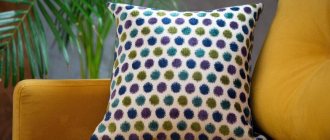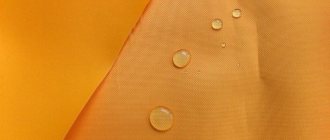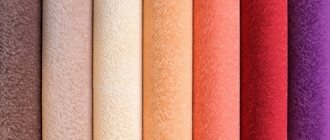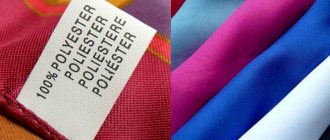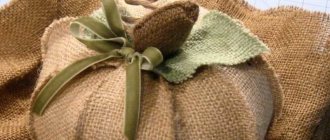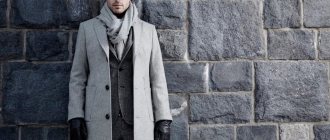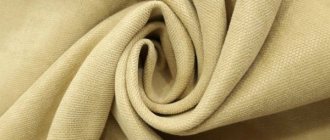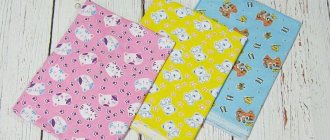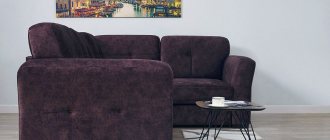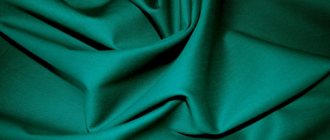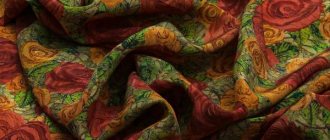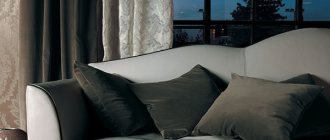Types of cotton fabrics
The properties of matter (thickness, density, elasticity) are determined not only by the composition, but also by the connection of the threads. Almost all types of weaving are used to make cotton fiber fabrics.
Polotnyanoye
The “thread through thread” method is used; they intersect only once. Such varieties have a flat, smooth surface, are characterized by high strength and density, the wrong side does not differ from the front. Most fabrics are made using the plain weave method.
| Textile | Description |
| Calico | Very dense appearance, artificial threads can be added to the composition. |
| Muslin | They began to make them for the first time in Iraq. Light and thin, usually does not require additional finishing. |
| Chintz | It is lightweight, can be plain-painted or printed. |
| Batiste | Made from twisted yarn, the fabric is weightless and translucent. |
| Calico | A dense variety of unbleached gray threads. Serves as a basis for the production of other materials: chintz, muslin, oilcloth, leatherette. |
| Veil | Delicate, translucent fabric, available with patterns. |
| Marquisette | Thin and light, ideal for summer wear. |
| Poplin | A distinctive feature is a small scar. |
| Taffeta | Hard, dense material, suitable for creating draperies and voluminous silhouettes. Has a glossy surface. |
This is interesting: Cotton appeared in Russia in the 16th century. In the middle of the 19th century, the country was in 5th place in the world in the production of cotton fabrics, and during the Soviet Union, cotton production accounted for 75%.
Twill
Performed according to the “1 through 2” or “1 through 3” scheme. The thread connection is asymmetrical. There are several varieties of this weave:
- Bumazeya. The fabric comes from England. Warm and soft, brushed on the reverse side.
- Denim. Hard and dense, holds its shape well. Painted with special sulfur-based solutions.
- Flannel. Soft fabric. Can be with one-sided or two-sided fleece.
- Plaid. A characteristic feature is a pattern in the form of a large cell.
Twill weave fabrics are heavy, thick, and have an uneven texture. They are elastic and stretch well diagonally.
Other types of weaves
For some fabrics, a different thread weave is used:
- Satin weave. There is one warp thread for every 4 weft threads. The material turns out smooth and shiny. A prominent representative is satin. But it has a drawback - it slips when cutting.
- Pile. An additional third thread is used. The fabric turns out soft, pleasant to the touch, fleecy. This is how velvet is made.
- Two-faced. 3 thread systems are used. The fabric is dense and soft. For example, footer, bike.
- Crossing. A special type typical for the manufacture of interlock. Features a smooth surface. The face and back look the same.
Note: Sometimes it is not the threads that intertwine, but the loops. The methods of connecting them can be different. As a result, the final material has a special structure. An example of such weaving is a kulirka.
Silk
Bed linen made from natural silk is rightfully considered royal. Thin, delicate flowing fabric is not only beautiful, it is smooth and pleasant to the touch. Not every family can afford a set of bed linen made from natural silk; its price is several times higher than the cost of similar sets made from cotton.
Silk fabric, giving a soft touch, looks elegant and lasts a long time, but requires delicate care. Products made from this fabric must be washed at low temperatures with the addition of liquid detergents on a delicate cycle. Silk does not like direct sunlight and does not tolerate drying out. If you take care of expensive linen according to the rules, its service life will surprise even skeptics.
Classifications of cotton fabrics
Cotton fabric has many varieties.
The division is based on various parameters.
By fiber length
In the textile industry, the yardage of raw cotton is of great importance.
Depending on the length, the yarn is:
- Short fiber. Range – from 20 to 27 mm. The material turns out to be heterogeneous in thickness, fleecy and loose. Flannel belongs to this group.
- Medium: from 28 to 34 mm. Used in the production of most fabrics: muslin, calico, chintz.
- Long-fiber: from 35 mm. Expensive raw materials. Its cost can be 10 times the price of regular cotton. This category includes poplin, voile, taffeta, and cambric.
Yarn is not made from fibers smaller than 20 mm. Cotton raw materials are considered the best, the length of which reaches 60 mm. Short fibers have less value and are budget-friendly.
By finishing method
During the production process, the material undergoes additional chemical and physical-mechanical processing, which improves its appearance and consumer characteristics.
Finishing of cotton fabric can be:
- Harsh. The fabric is not subjected to any treatment, has a grayish tint and is rough to the touch.
- Bleached. Special substances are used to impart whiteness.
- Plain painted. Solid material of a certain color.
- Printed. A design is applied to the main tone using printing.
- Multicolored. It has a special pattern in the form of cells or stripes, which is obtained through the interweaving of colored threads.
- Melange. The fabric is woven from threads of different colors. The result is an interesting print: often speckled, less often gradient, where one shade smoothly transitions into another. Great for ethnic style clothing.
For information: Fabrics can be mulined, that is, woven from multi-colored twisted yarn, or mercerized, chemically treated, making the final material stronger and more pleasant to the touch.
By purpose
Cotton fabrics are multifunctional. A wide variety of products are made from them. Depending on this, different types are divided according to purpose.
| Purpose | Description | Groups | Fabrics |
| Dress shirts | The main group that unites the largest number of varieties. The material is characterized by high aesthetic properties, drapes well, withstands many washes, and has a durable color. | There are 3 groups in this category: · Summer. Lightweight, well breathable. They have light shades. They are characterized by low density. Many fabrics are mercerized. · Winter. They differ in thickness and presence of pile. It is created by backcombing weft threads. They are soft and have good thermal conductivity. · Demi-season. They are made from yarn of different thicknesses, have high strength and density. | Summer ones include volta, veil, percale, marquisette, cambric. Winter varieties include baize, flannel, fumazea. Garus, tartan, and crepe are suitable for the off-season. |
| Linen | In second place in terms of prevalence. Their density varies from 80 to 180 g/sq.m. meter. Hygroscopic, resistant to friction and frequent washing. Basically, there are bleached varieties. | Divided into 3 large groups: · Calico. The fabrics are bleached. Their density is up to 177 grams per square meter. · Mitkali. Plain colored varieties. The warp threads are thicker (18.5 tex). Weft threads only 15.4 tex. · Special. Heavy fabrics that are durable. Made from medium thickness fibers. This also includes towel varieties (terry, waffle) made from yarn below average thickness. They absorb moisture well. | This category includes muslin, calico, calico, madapolam, teak eraser, greensbon. |
| Suit-coat | Dense, heavy types. Resistant to deformation and abrasion, have high tensile strength. Viscose, polyester fiber, and up to 15% nylon are often added to the composition. | Typical representatives are twill, moleskin, tights, suede, denim. | |
| Lining and cushioning | The surface has an even texture, smooth. Characterized by low elongation. They do not shrink and are durable. | Calico, twill, trim. | |
| Furniture and decorative | Made from twisted and untwisted yarn. They have different weaving: twill, plain, jacquard. They often come with the addition of lavsan, viscose silk, and nylon. | The main representatives are tapestry, plush, shagreen. | |
| Technical | Wear-resistant, resistant to deformation. | They have several varieties, but this division is very arbitrary: · Filter. · Wiping. · Packaging. | Descaled percale, filter mat, waffle fabric, tarpaulin. |
FYI: There is also bio-cotton. These are organic fabrics. Cultivation, collection of raw materials, production are carried out without the use of chemicals. This fabric is environmentally friendly. It has a natural shade and is not subject to bleaching or dyeing.
What requirements must linen fabrics meet?
Materials in the “linen” category must have the following qualities:
- Softness.
- Wear resistance.
- Resistant to sweat and regular washing.
- Ability to absorb moisture.
- Hygroscopicity.
- Resistance to deformation (shrinkage, stretching).
- Color fastness when exposed to sweat, friction, washing.
- Sufficient whiteness.
The requirements for materials intended for the creation of underwear will be different than for linens used, for example, for the production of bedding.
Catalog of plant-based fabrics
Main characteristics
Cotton fabrics have gained popularity due to their quality characteristics:
- High strength (comparable to silk). Although in this indicator cotton is inferior to flax. When wet, strength increases by 15%.
- Density. It varies in the range of 45-850 g per square meter. 100g/sq. meter is an indicator for light fabrics. Figures over 200 g are typical for heavy fabrics.
- Various thicknesses. The largest is from 5.9 to 11.7 Tex.
- Hygroscopicity. Absorbs up to 20% of moisture from its own weight. It does not become wet.
The width of the canvas can vary from 50 to 170 cm. The most commonly used are varieties with parameters of 61-74 cm.
- Quick view
Cotton fabric Winter landscape, blue, 5.1 m +1.4 m
In stock (6.5)
590 rub./m
More details
Artificial
Unlike synthetic fibers, artificial fibers are made from natural raw materials. Therefore, bedding sets are superior to those made from blends and synthetics. The most common sets are made of bamboo, viscose fiber and Tencel.
Bamboo fabric
Pleasant to the touch, soft bamboo fiber is produced from the resulting stems and leaves of the plant. The fabrics are durable. The composition often includes cotton, silk, linen and synthetic raw materials. 100% bamboo fabric is slightly heavier than blended fabrics.
Bed linen has bactericidal and hypoallergenic properties and almost does not wrinkle. Bamboo bedding sets last a long time and are easy to care for.
Lyocell | Tencel
Lyocell (Tensel, Lyocell) is a new generation of natural fabric woven from eucalyptus fibers obtained from tree wood. The material is superior to cotton in terms of hygroscopicity and breathability. Soft, pleasant to the touch, homogeneous with a delicate shine.
Eucalyptus fibers are believed to have health benefits. They are credited with bactericidal properties. Bed linen made from Tencel (lyocell) is more expensive than cotton, but it lasts longer and requires some care. Wash Tencel products at a temperature not exceeding 30 degrees. Since the fabric hardly wrinkles, ironing is easy.
Viscose
Viscose belongs to the group of artificial materials. The raw material for it is cellulose obtained from wood. The bedding is rich in color. Silky, gliding, pleasant fabric with a feeling of coolness to the touch.
The soft and smooth fabric has a tactile sensation similar to natural silk, but is cheaper. Viscose is often used in combination with natural fabrics. The service life is comparable to satin sets.
Properties of cotton
The following properties of natural cotton are highly valued:
- Breathability. The weaving methods used do not interfere with air circulation. In such clothes the skin breathes.
- Ease. Even the densest fabrics do not restrict movement and allow you to feel comfortable.
- Hypoallergenic. When worn for a long time, it does not cause itching or skin irritation.
- Heat retention. This is due to the special structure of the fibers. They are hollow inside, so they trap air.
- Thermoplasticity. It remembers its shape well when heated and retains it for a long time afterwards.
Please note: The material is not afraid of organic solvents (alcohol, vinegar), but is sensitive to inorganic acids.
Let's talk about the benefits
Textile production offers a huge variety of cotton fabrics. They are considered the most popular. This is explained by a whole set of advantages:
- Hygiene. It consists of several criteria: breathability, hygroscopicity, thermal conductivity.
- Pleasant tactile sensations. This applies to fabrics that have undergone additional processing.
- Wide range of applications. They have found their place in everyday life and in the industrial sphere.
- Medicinal properties. There is an opinion that cotton material helps with neuroses and relieves stress.
- Practicality. They do not require special care and are easy to wash.
- Ease of processing. They cut well, do not move or slip when cutting.
Cotton fabrics on the market are presented in a varied palette. They hold designs for a long time, applied in any way.
A few words about the shortcomings
The disadvantages of cotton materials cannot be ignored. These include:
- Strong creasing.
- High degree of shrinkage.
- Sensitivity to light. Colored products fade in the sun, white ones acquire a yellowish tint. Exposure to ultraviolet radiation for more than 940 hours reduces the strength of the fabric by 2 times.
- Exposure to microorganisms. In damp conditions, matter rots.
- The high cost of organic cotton.
Please note: Most disadvantages can be considered conditional. The problem of wrinkles is easily solved by adding a small percentage of synthetics. To reduce shrinkage, the fabrics are treated with a special solution that reduces the swelling of the fibers, or an anti-shrink finishing is carried out.
Let's summarize - what is better to choose?
When choosing the best bedding, you should determine its purpose. To arrange a children's bed, you need to choose only natural fabrics.
The most durable bedding will be made from mako satin, linen, silk, and satin. Based on the complexity of caring for products, the simplest sets will be those made from bamboo, ranfors, and polycotton. And if you want to save money, sets made of chintz or polysatin are recommended.
The undisputed leaders are natural fabrics: silk, cotton, linen. And the choice of an expensive kit is justified by the long service life.
Scope of application
Cotton textiles have found their place in many industries.
| Area of use | Types of fabrics |
| Cloth | Dresses, shirts, skirts, blouses are made from:
Diftin is used for sewing demi-season outerwear. |
| Products for children | Interlock is used for baby onesies. For newborn diapers and baby vests, chintz is preferable. Caps and hats are made from flannel. |
| Underwear | Hygienic, durable, beautiful sets are made from cambric. It is additionally subjected to mercerization. For everyday wear, it is better to choose products from kulirka and interlock. |
| Lining | Varieties of twill weave are commonly used for this purpose. Calico is also suitable for linings. |
| Bed dress | Beautiful and durable pillowcases, duvet covers, and sheets are made from cambric and satin. The latter material has a slight drawback - it slips when laid. Products made from chintz are weightless. Poplin is a more expensive variety. It is also used to make covers (bed covers, mattress covers). A thin voile is suitable for bed linen in the summer season. |
| Home textiles | Light muslin curtains will decorate any window. A translucent veil is used for multi-layer decoration of window openings. Heavy velvet is the ideal solution for winter curtains in the living room. Elegant tablecloths are made from poplin. Taffeta bedspreads look luxurious in the interior. |
| Shoes | Light summer shoes are made from some fabrics, such as satin. For auxiliary parts of shoes, harsh varieties are used. These include paper cord and diagonal. For lining and internal elements, teak twill, greensbon, flannel, and flannel can be used. |
| Upholstery | The furniture and upholstery group includes dense samples of cretonne, diftin, and calico. |
A large selection of materials allows you to choose the best option for a particular case.
Mixed
When sewing bedding sets, not only natural materials are used, but also mixed ones. The composition of such fabrics should include a large percentage of natural fibers. Otherwise, the linen will be uncomfortable and accumulate static electricity. And the service life of products made from low-quality materials is short.
When choosing mixed fabrics, the composition of the fabrics is important. It’s easy to determine the difference between mixed ones - read the manufacturer’s label.
Polycotton
Blended polycotton fabric is a new generation high-tech material. The material meets safety requirements: it is breathable and hypoallergenic. Due to polyester fibers, the material does not shrink or wrinkle.
Thanks to artificial fibers, polycotton is cheaper than natural cotton and is easy to care for. Depending on the composition of the raw materials, the cost of the canvas varies. There are 4 options for mixed fabric, they are shown in the table below:
| Polycotton | Cotton content,% | Polyester,% |
| 1. | 65 | 35 |
| 2. | 50 | 50 |
| 3. | 35 | 65 |
| 4. | 15 | 85 |
To purchase a high-quality set that is pleasant and durable, you should give preference to fabrics containing at least 50% natural raw materials.
Polysatin
Polysatin, like polycotton, is a mixed material used for sewing linen. The dense material with a satin sheen is a combination of cotton fibers and polyester, with a satin weave. Microfiber is added to some types of fabrics.
The cotton content in this fabric varies from 30 to 50%. Polysatin has several advantages:
- color fastness and the ability to apply 3D prints;
- crease resistance;
- ease and ease of care;
- affordable price;
- smoothness and shine of the fabric.
But there are also disadvantages: poor moisture and breathability. This drawback makes a set of polysatin underwear uncomfortable in the hot season.
How to care for cotton products
Despite the fact that cotton is less durable than synthetics. If treated correctly, it can last for many years.
Attention: Be sure to look at the care instructions on product labels. Different types have their own characteristics.
But there are a few general rules that must be followed.
Wash
Cotton products are easy to clean from dirt. But you should always wash cotton separately from synthetics (to avoid the formation of pilling), and do not mix white fabrics with colored ones. Hand and machine wash allowed:
- The water temperature for light, plain products is +90 degrees, for colored ones – no higher than +40 degrees.
- Pre-soaking with powder is possible.
- Items must be turned inside out before placing in the drum.
It is better to use a gentle spin mode. To make the surface soft, you can rinse the items in cool water after washing.
Drying
Drying in special devices is not allowed. In this case, the fabric structure may become deformed.
The products should be dried in natural conditions (preferably in the fresh air) in a horizontal position, carefully straightening the material.
